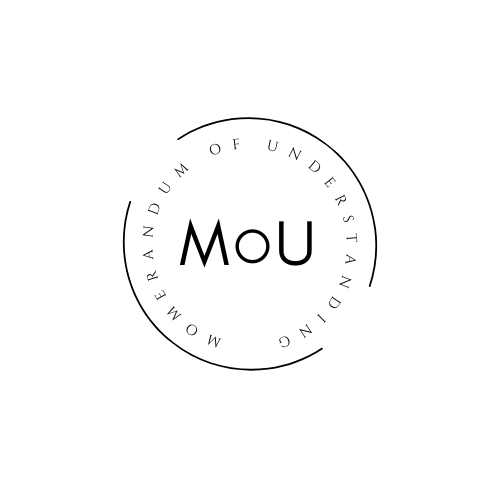The Role Of Bilateral Agreement As Pillars Post-Pandemic Economic Resilience: Capabilities Indonesia-Australia Comprehensive Economic Partnership Agreement (IA-CEPA) To Trade Growth Accelerator In Indonesia
DOI:
https://doi.org/10.21111/mediasi.v4i2.10033Keywords:
Covid-19, Economic Powerhouse, IA-CEPA, Indonesia’s TradeAbstract
The Covid-19 pandemic hit the world in 2020, causing various changes that greatly affected globalstability, which once the economic sector. The Indonesian economy has not spared from the effectsof the pandemic that has arisen from various social restrictions, resulting in a quite drastic economicdecline. The Indonesian government are optimizing economic cooperation with several partnercountries to recover the post-pandemic economy. The Indonesia-Australia ComprehensiveEconomic Partnership Agreement (IA-CEPA) are comprehensive economic partnership betweenIndonesia and Australia. The IA-CEPA provides many conveniences that Indonesia can utilize torecover the economy after the Covid-19 pandemic. The Economic Powerhouse Strategy arecollaboration of excellence carried out by Australia and Indonesia to create higher-quality products.In addition, the IA-CEPA collaboration also provides easy access by eliminating tariffs so thatproducts from Indonesia can compete at lower prices. This study purpose to determine the role ofthe IA-CEPA in Indonesia's trade growth after the Covid-19 pandemic. Through descriptivequalitative methods, it can be concluded that the IA-CEPA has played the role as an accelerator ofIndonesian trade through the Economic Powerhouse strategy. That Australia are supplier of rawmaterials, and Indonesia acts as the center for processing and marketing in the global market.Another advantage are the elimination of entry tariffs for products from Indonesia to the Australianmarket. So that the Indonesian economy has returned to stability after the Covid-19 pandemicthrough international trade activities supported by the IA-CEPA. This research based onIslamization Concept, namely, Ta’awun in Islam, which contains Islamic values.References
Book:
Muhsin. Bertetangga Dan Bermasyarakat Dalam Islam. Jakarta: Al-Qalam, 2004.
Shihab, Quraish. Tafsir Al Misbah : Pesan, Kesan Dan Keserasian Al-Qur’an. Jakarta: Lentera
Hati, 2002.
Journal:
Agape, Maria, Widya Prasetya, Christien Simorangkir, Program Studi, Ilmu Ekonomi,
Universitas Kristen, and Satya Wacana. “Perdagangan Internasional Indonesia : Sebuah
Komparasi Di Masa Pandemi†5, no. 1 (2022): 87–115.
Candra, Ilham Agustian, and Arie Kusuma Paksi. “Motivasi Australia Memberikan Bantuan Luar
Negeri Kepada Indonesia Dalam Menangani Penyebaran COVID-19 Tahun 2020-2021.â€
Jurnal Noken: Ilmu-Ilmu Sosial 7, no. 1 (2021): 14.
Moenardy, Dwi F, Sintia Catur Sutantri, Gilang Nur Alam, and Denny Saputera. “IndonesiaAustralia Comprehensive Economic Partnership Agreement (IACEPA) in Economic
Recovery During the Covid-19 Period.†Turkish Journal of Computer and Mathematics
Education (TURCOMAT) 12, no. 8 (2021): 821–829.
https://turcomat.org/index.php/turkbilmat/article/view/2908.
Rusmin, Julia Hardianti, Adi Suryadi, and Nurjannah Abdullah. “Analisis Proses Perundingan
Kerja Sama IA-CEPA (Indonesia-Australia Comprehensive Economic Partnership
Agreement) Tahun 2013-2018.†Hasanuddin Journal of International Affairs 1, no. 2
(2021): 2775–3336.
Report:
Bank Indonesia. “Indonesia Economic Report 2020 ‘Synergy to Build Optimism for Economic
Recovery.’†Bersinergi Membangun Optimisme Pemulihan Ekonomi (2020): 112.
https://www.bi.go.id/id/publikasi/laporantahunan/perekonomian/Documents/9_LPI2020.pdf
Indonesia, Kemeterian Perindustrian Republik. “Ekspor Indonesia Berpeluang.†Website Resmi
Kemeterian Perindustrian Republik Indonesia. Last modified 2019. Accessed February 3,
https://kemenperin.go.id/artikel/20383/Ekspor-Indonesia-Berpeluang
Limanseto, Haryo. “Pertumbuhan Ekonomi Nasional Tahun 2021 Berikan Sinyal Positif Terhadap
Prospek Ekonomi Tahun 2022.†Website Resmi Koordinator Perekonomian Republik
Indonesia. Last modified 2022. Accessed January 8, 2023.
https://www.ekon.go.id/publikasi/detail/3692/pertumbuhan-ekonomi-nasional-tahun-2021-
berikan-sinyal-positif-terhadap-prospek-ekonomi-tahun-2022.
Perdagangan, Kementerian. Indonesia-Australia Comprehensive Economic Partnership
Agreement, 2019.
Statistik, Badan Pusat. “Ekspor Desember 2021 Mencapai US$22,38 Miliar Dan Impor Desember
Senilai US$21,36 Miliar.†Website Badan Pusat Statistik. Last modified 2022.
Accessed January 8, 2023. https://www.bps.go.id/pressrelease/2022/01/17/1917/ekspordesember-2021-mencapai-us-22-38-miliar-dan-impor-desember-2021-senilai-us-21-36-
miliar.html.
“RANCANGAN UNDANG-UNDANG TENTANG INDONESIA DAN AUSTRALIA (
INDONESIA – AUSTRALIA COMPREHENSIVE ECONOMIC PARTNERSHIP
AGREEMENT )†(2020).
Website:
Dianne, Laudetta. “GELIAT INDUSTRI PENGOLAHAN DAGING DENGAN
IMPLEMENTASI PERJANJIAN IA CEPA.†Website Resmi Kemetrian Perindustrian
Republik Indonesia. https://agro.kemenperin.go.id/artikel/6490-geliat-industri-pengolahandaging-dengan-implementasi-perjanjian-ia-cepa.
Dukjak. Kunci Hubungan Bilateral Indonesia Dan Australia: Kolaborasi Dan Saling
Menghormati., 2013.
https://www.setneg.go.id/baca/index/kunci_hubungan_bilateral_Indonesia_dan_australia_ko
laborasi_dan_saling_menghormati
Galih, Andini Titis. “FENOMENA PANIC BUYING: MENGAPA BISA TERJADI?†Binus
University. Last modified 2022. Accessed January 18, 2023. https://studentactivity.binus.ac.id/himpsiko/2022/05/fenomena-panic-buying-mengapa-bisa-terjadi/.
Jayani, Dwi Hadya. “Produk Industri Pengolahan Dominasi Ekspor Indonesia per April 2021.â€
Databoks Katadata. Last modified 2021. Accessed January 8, 2023.
https://databoks.katadata.co.id/datapublish/2021/05/24/produk-industri-pengolahandominasi-ekspor-indonesia-per-april-2021.





